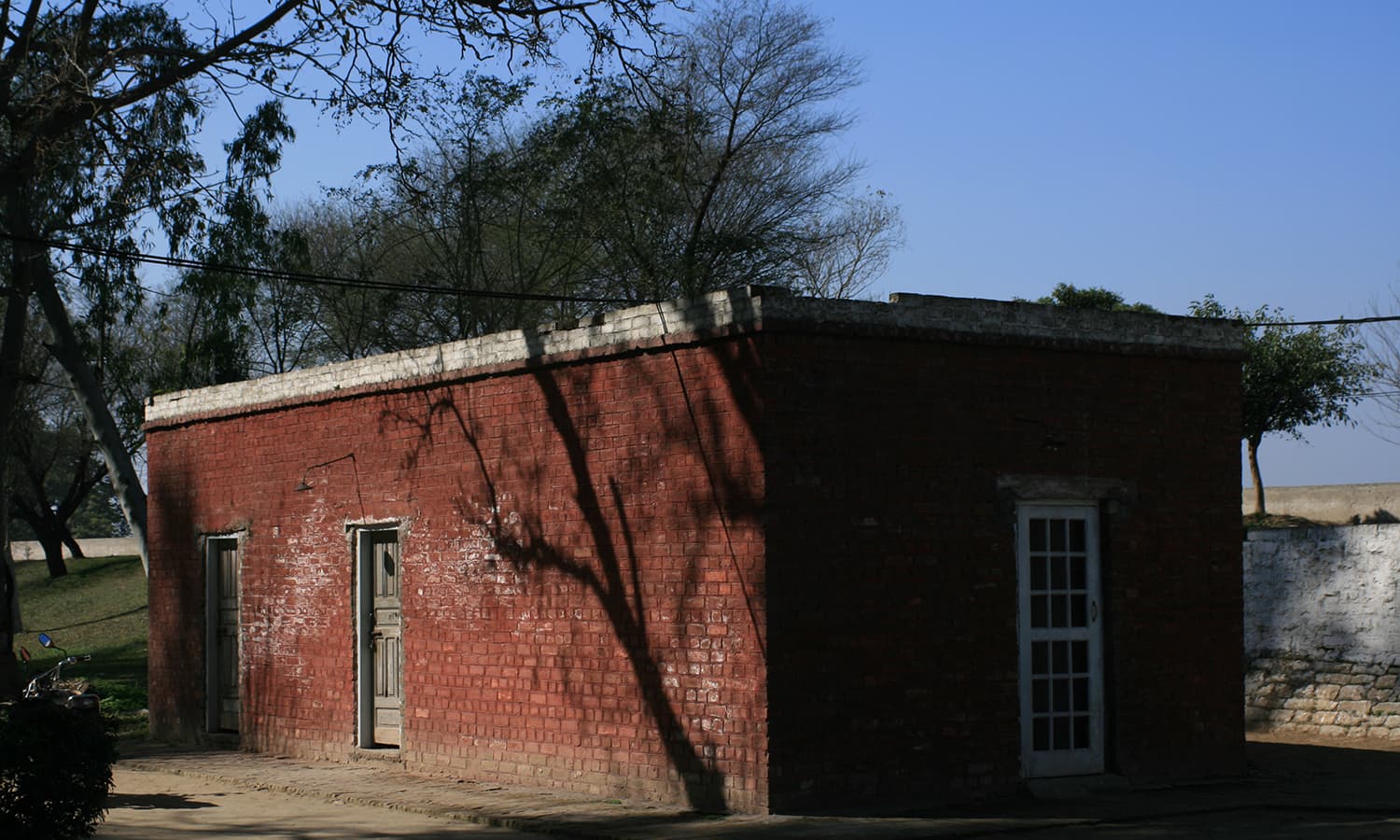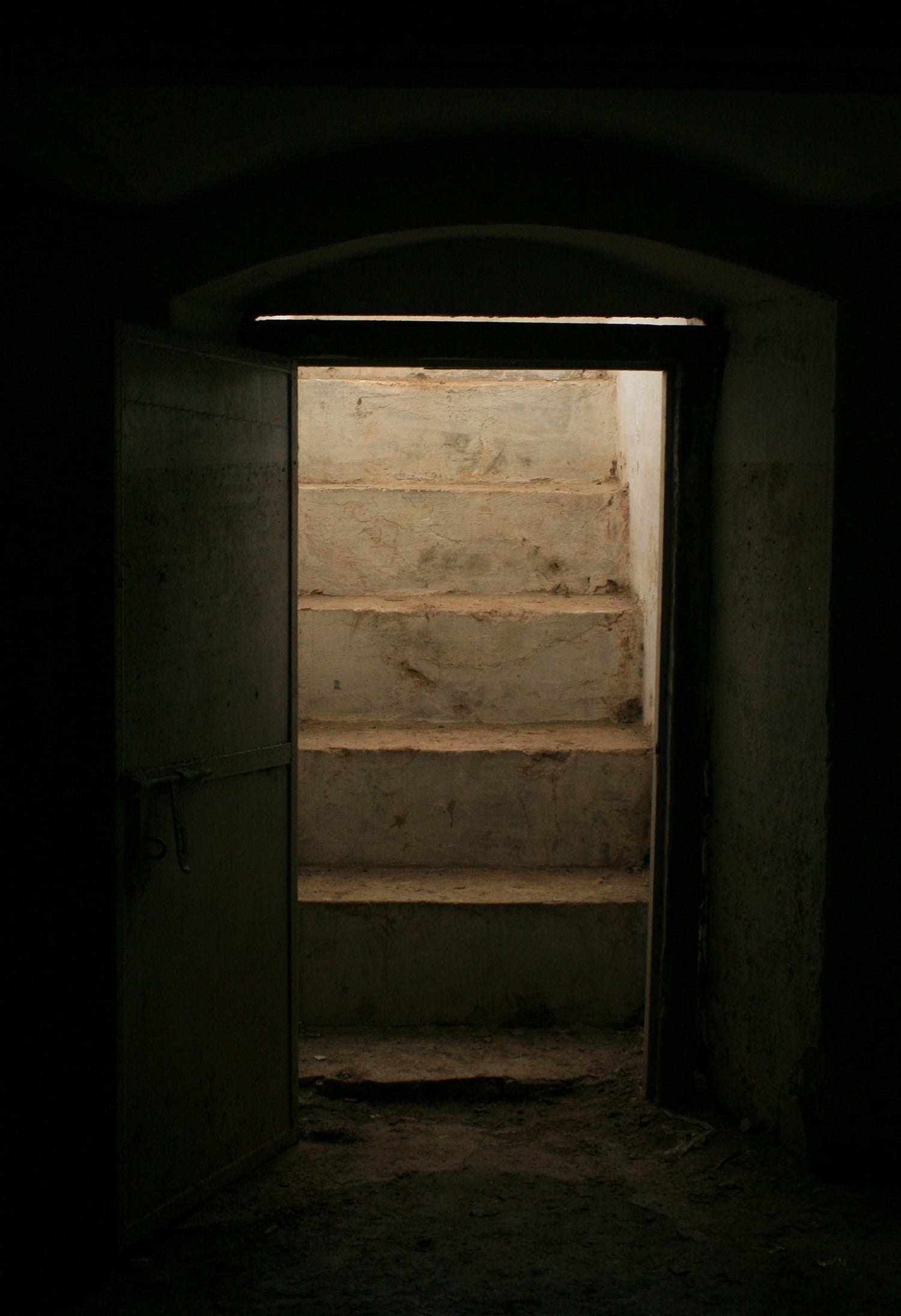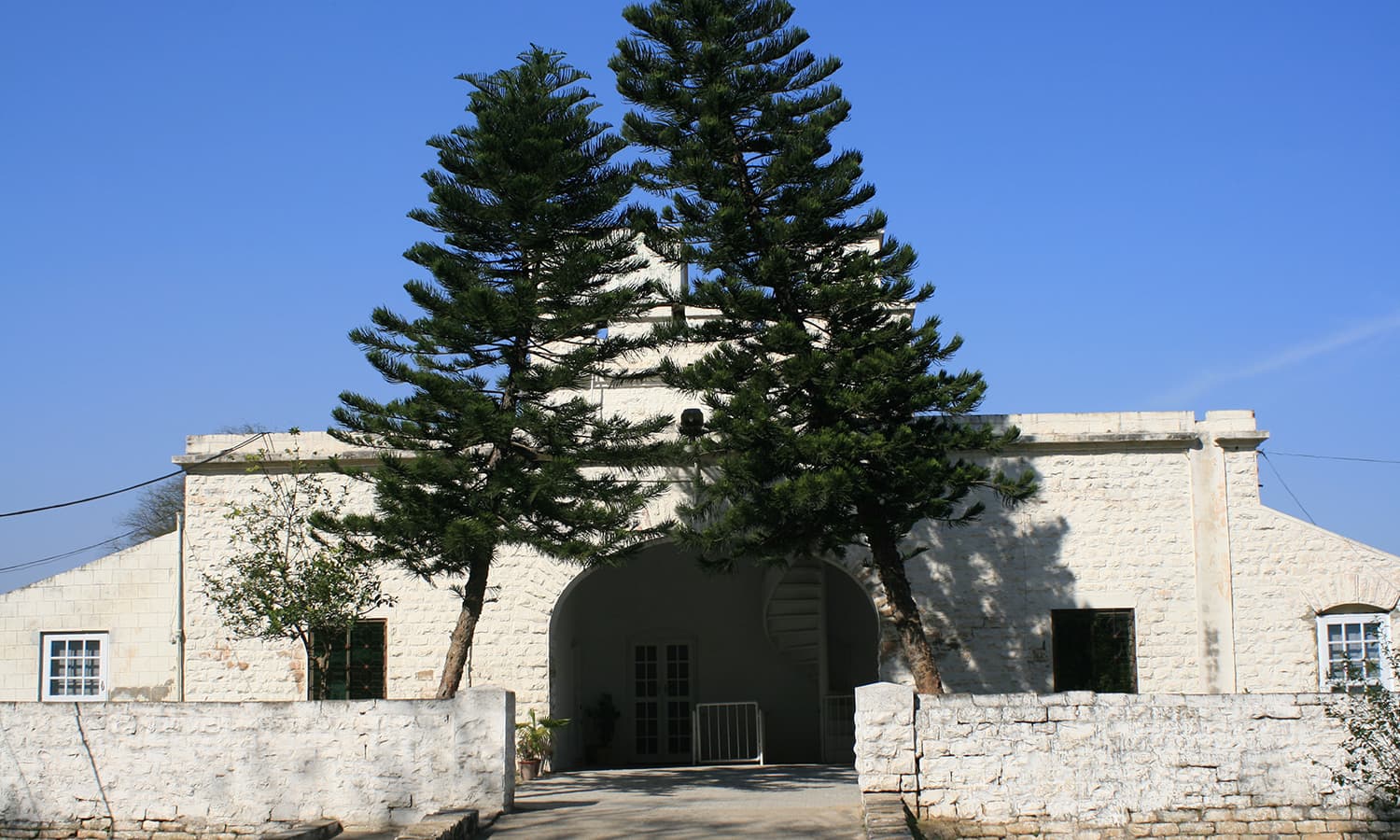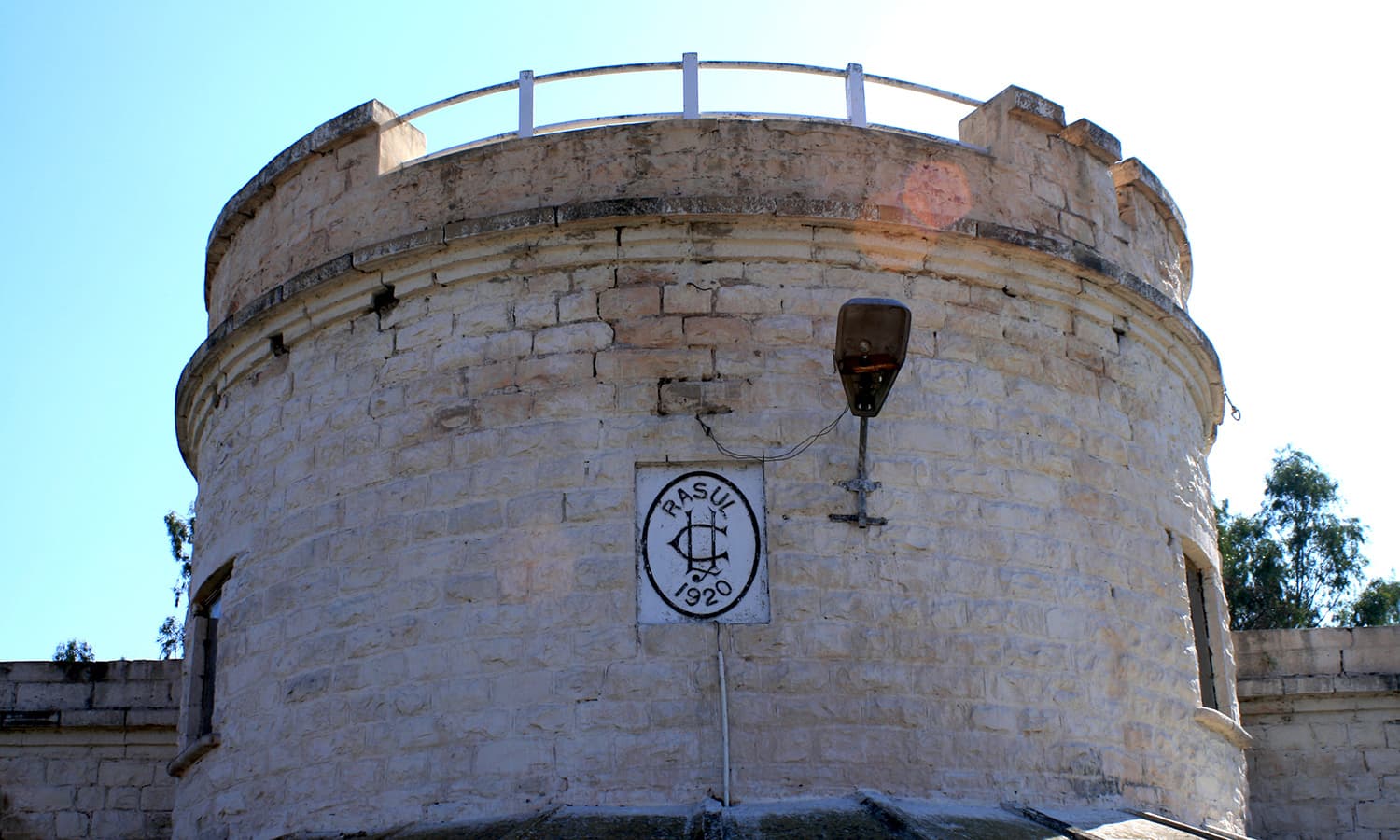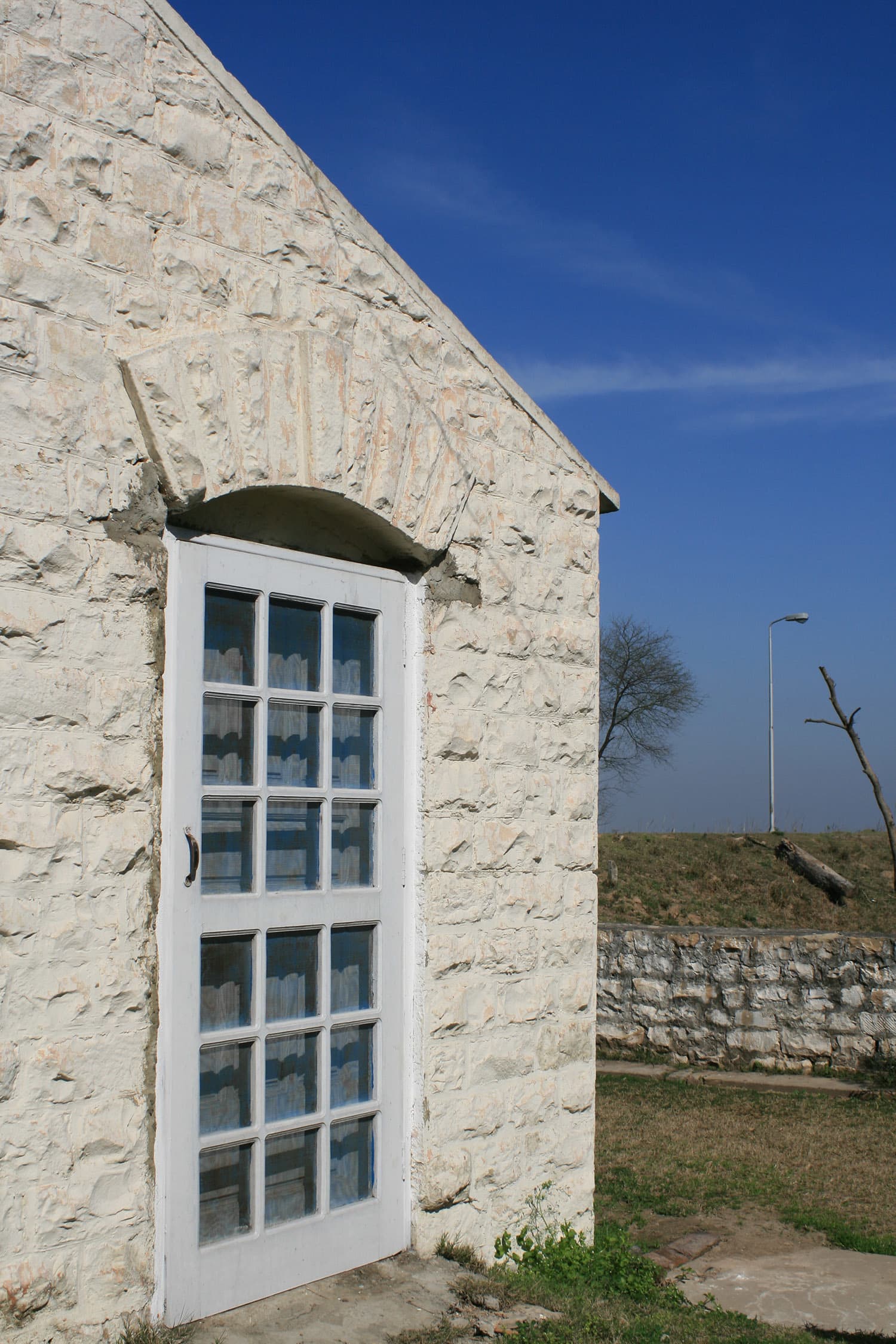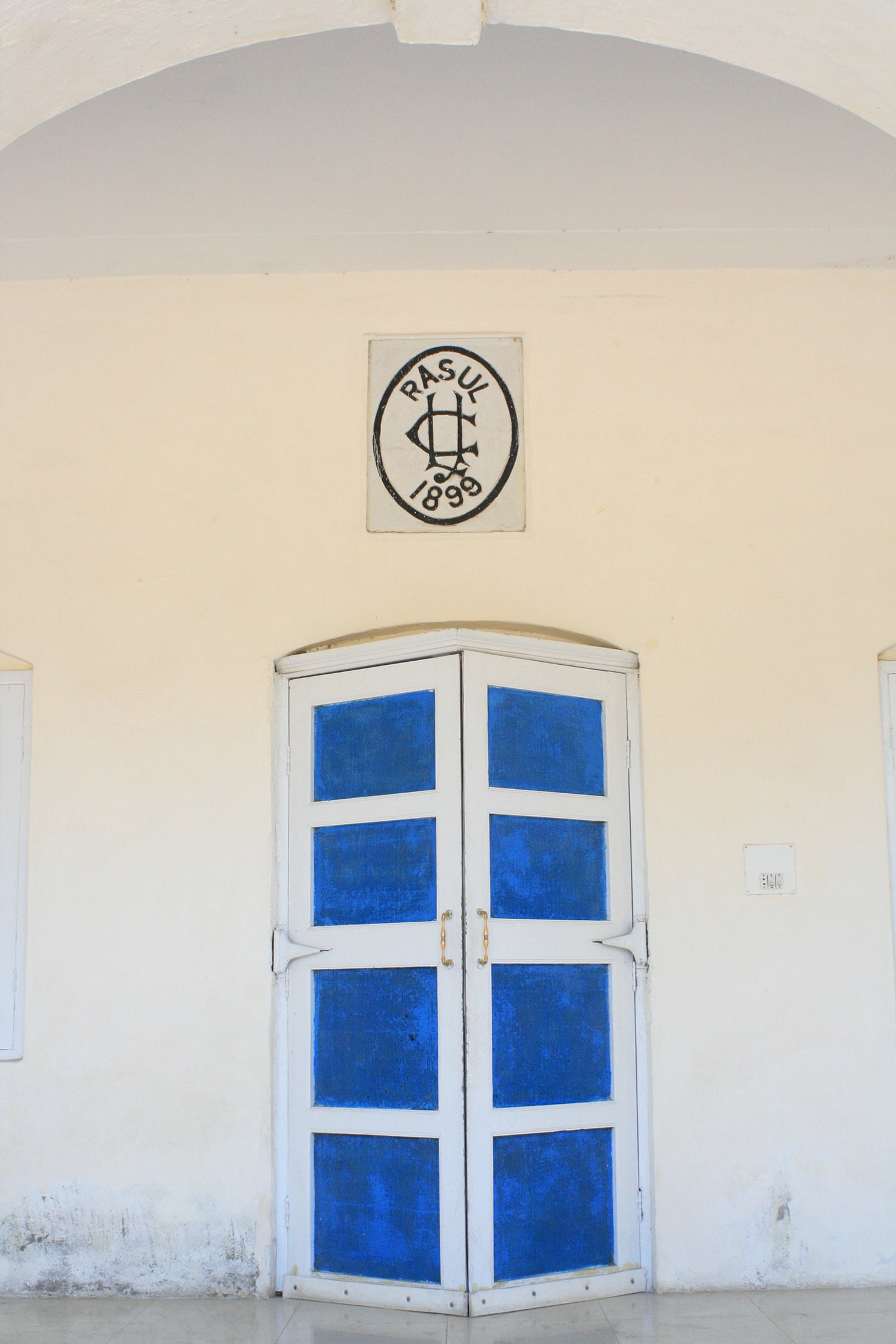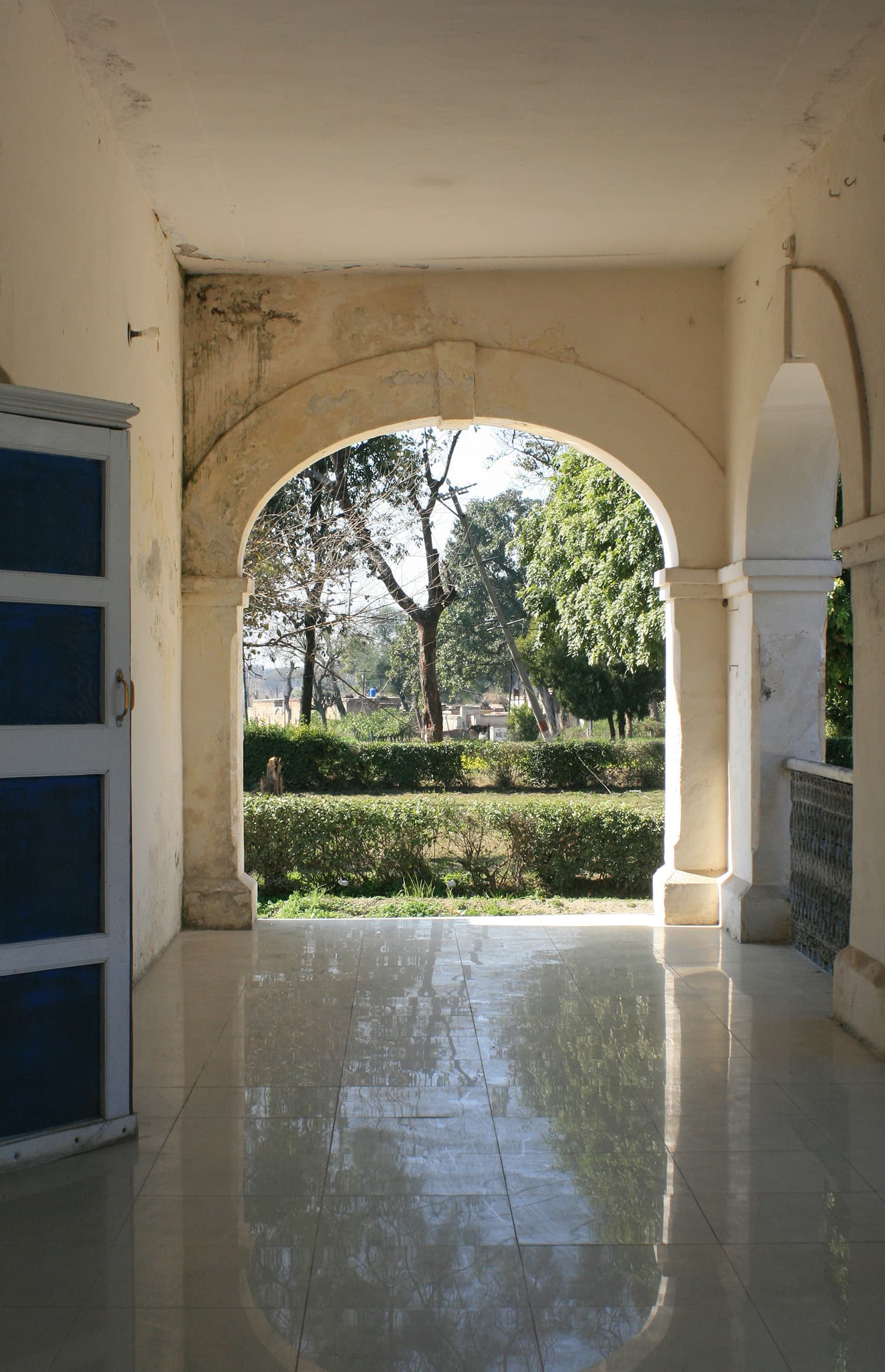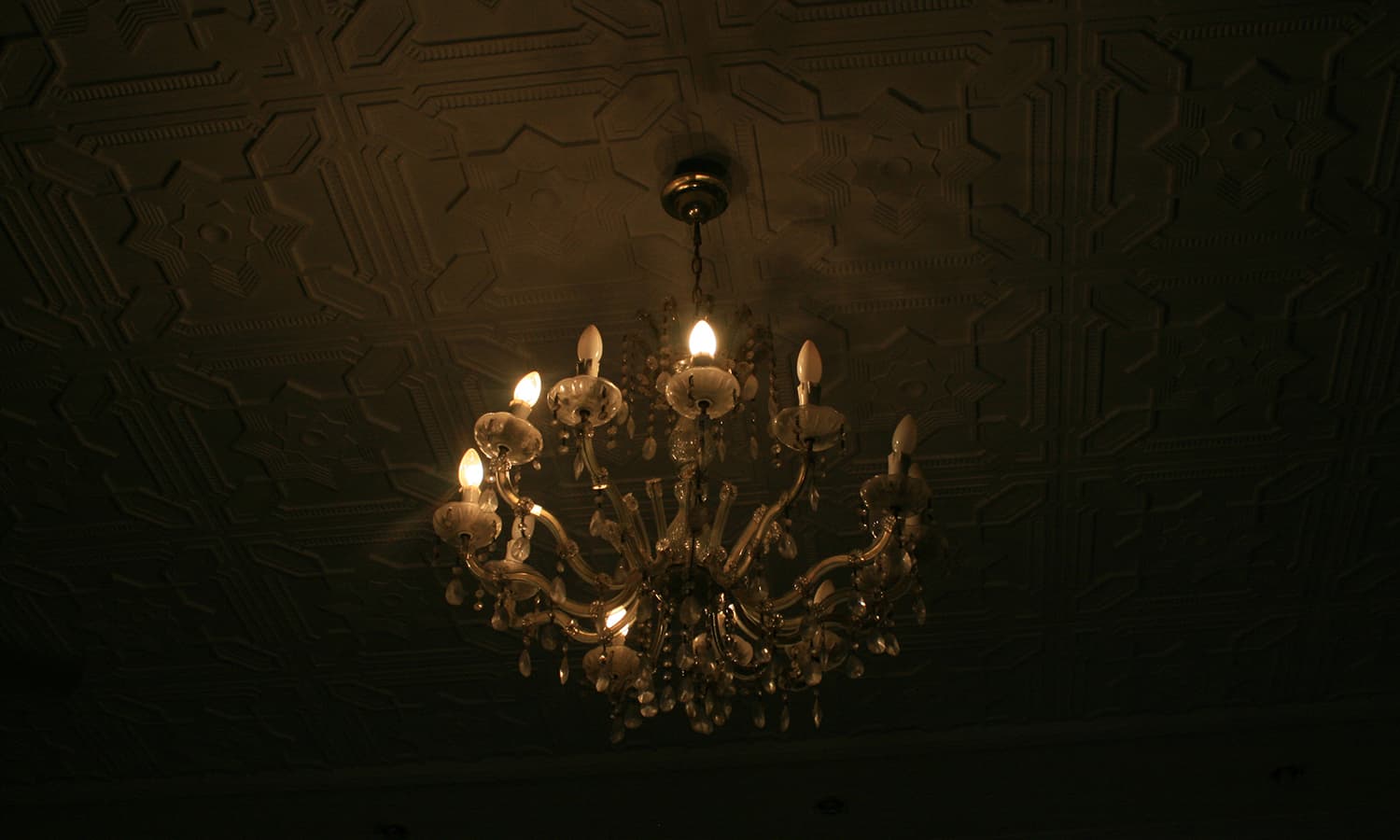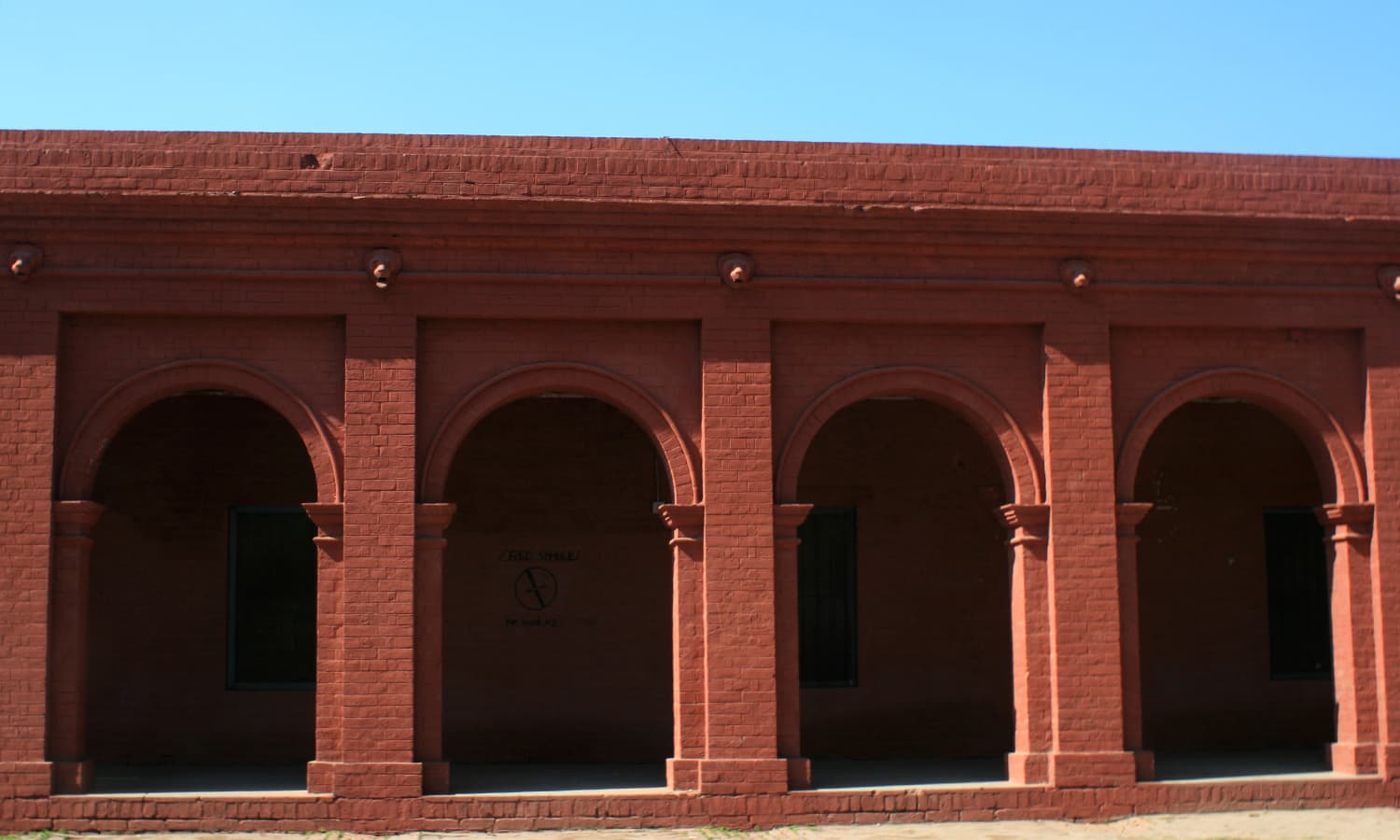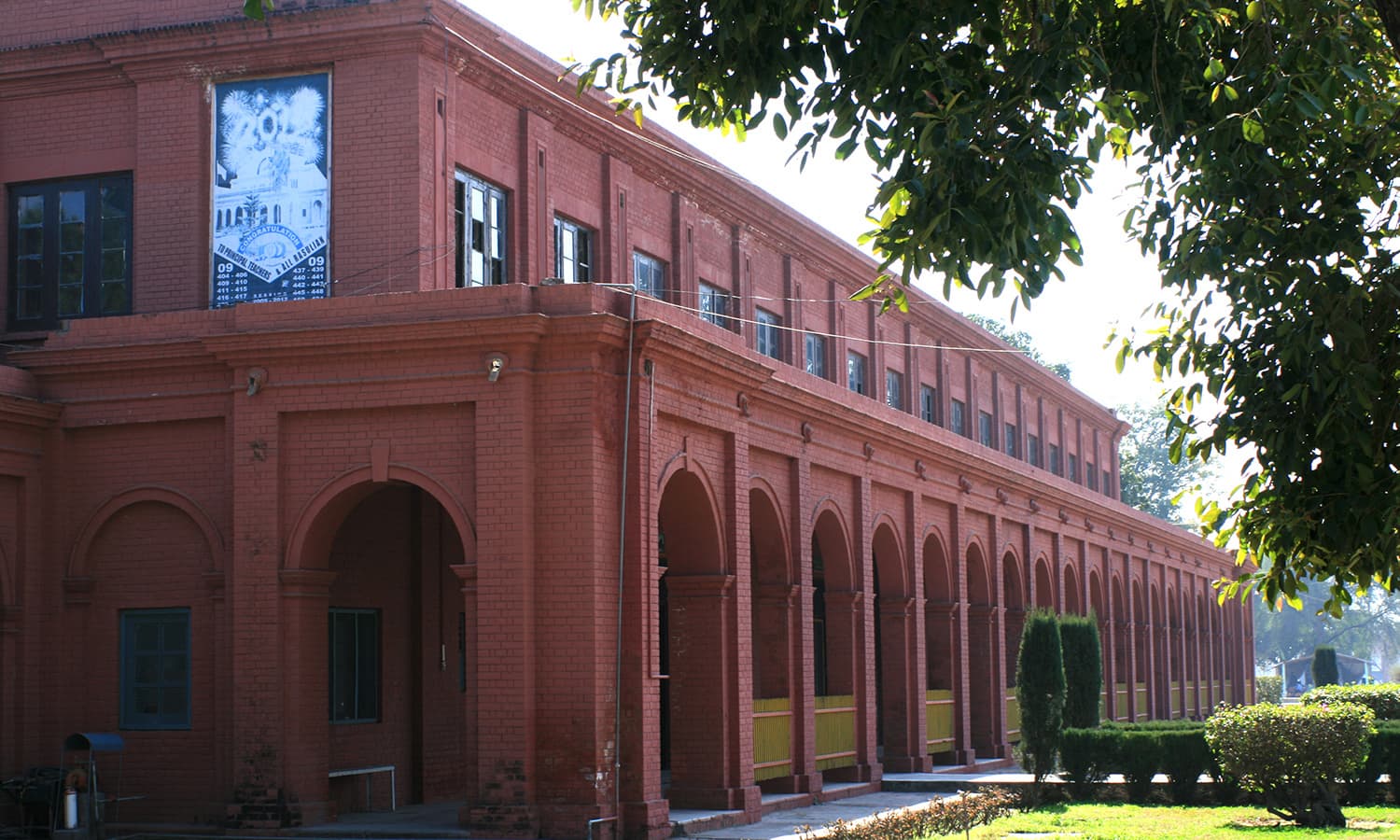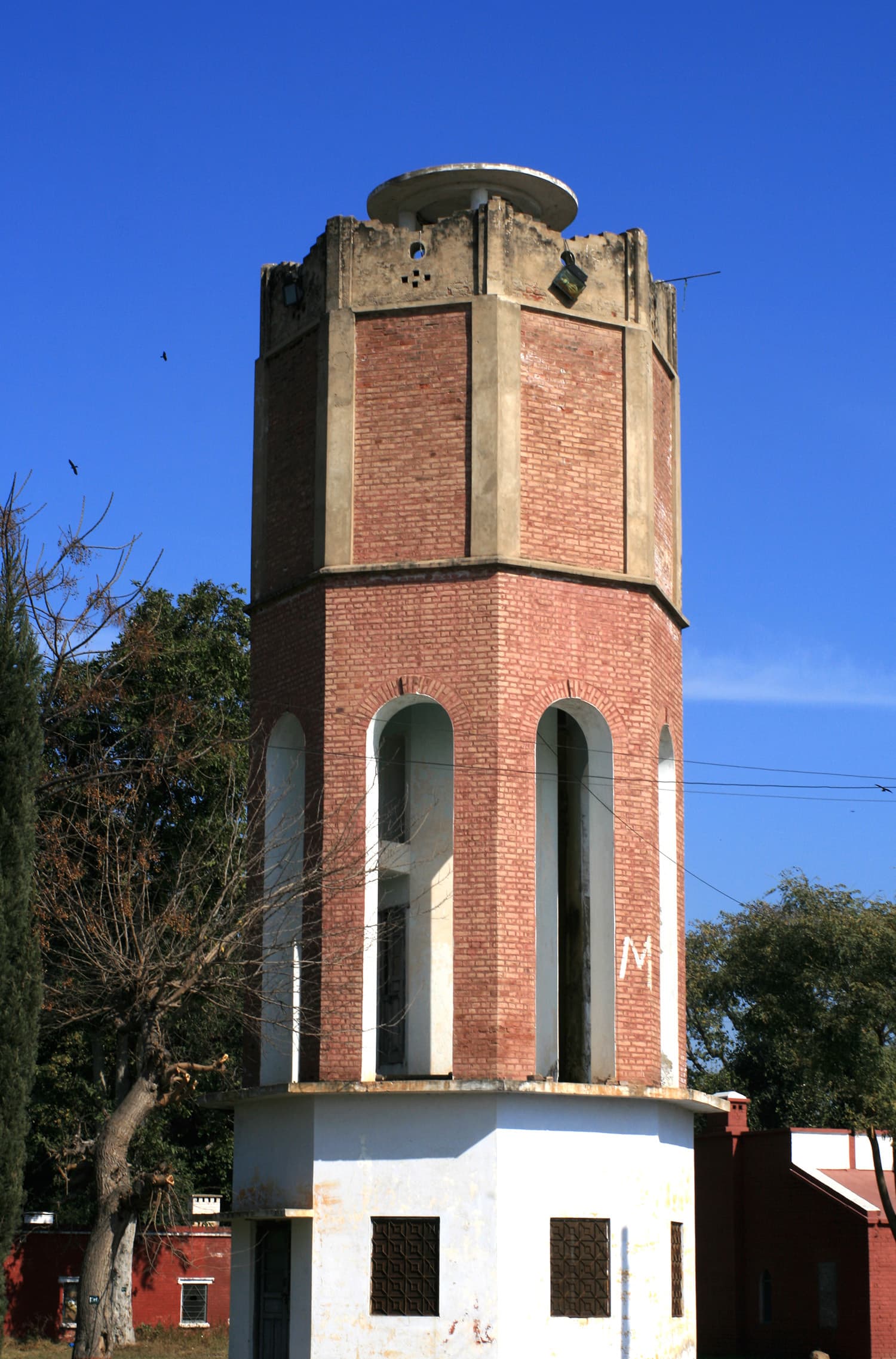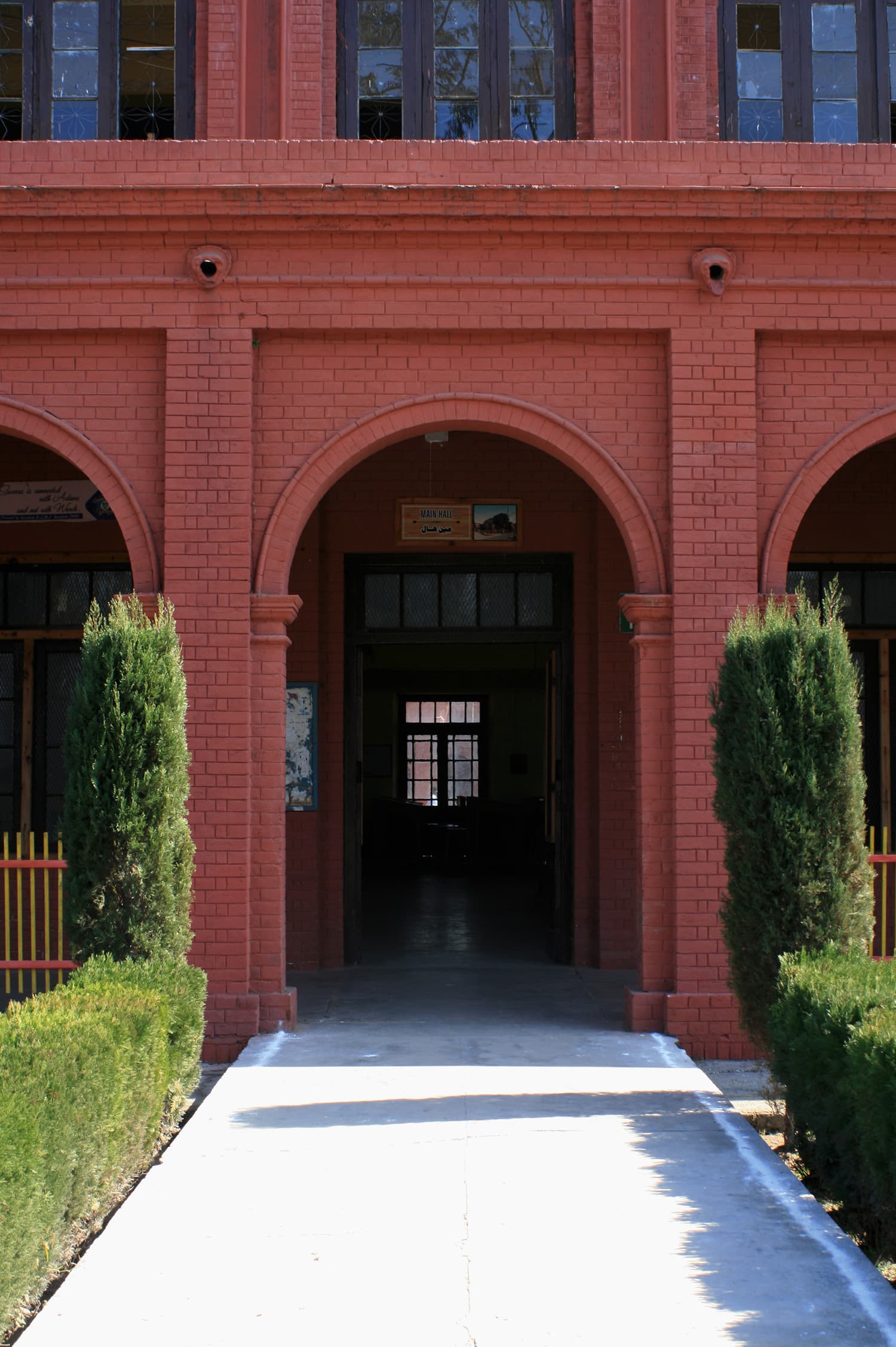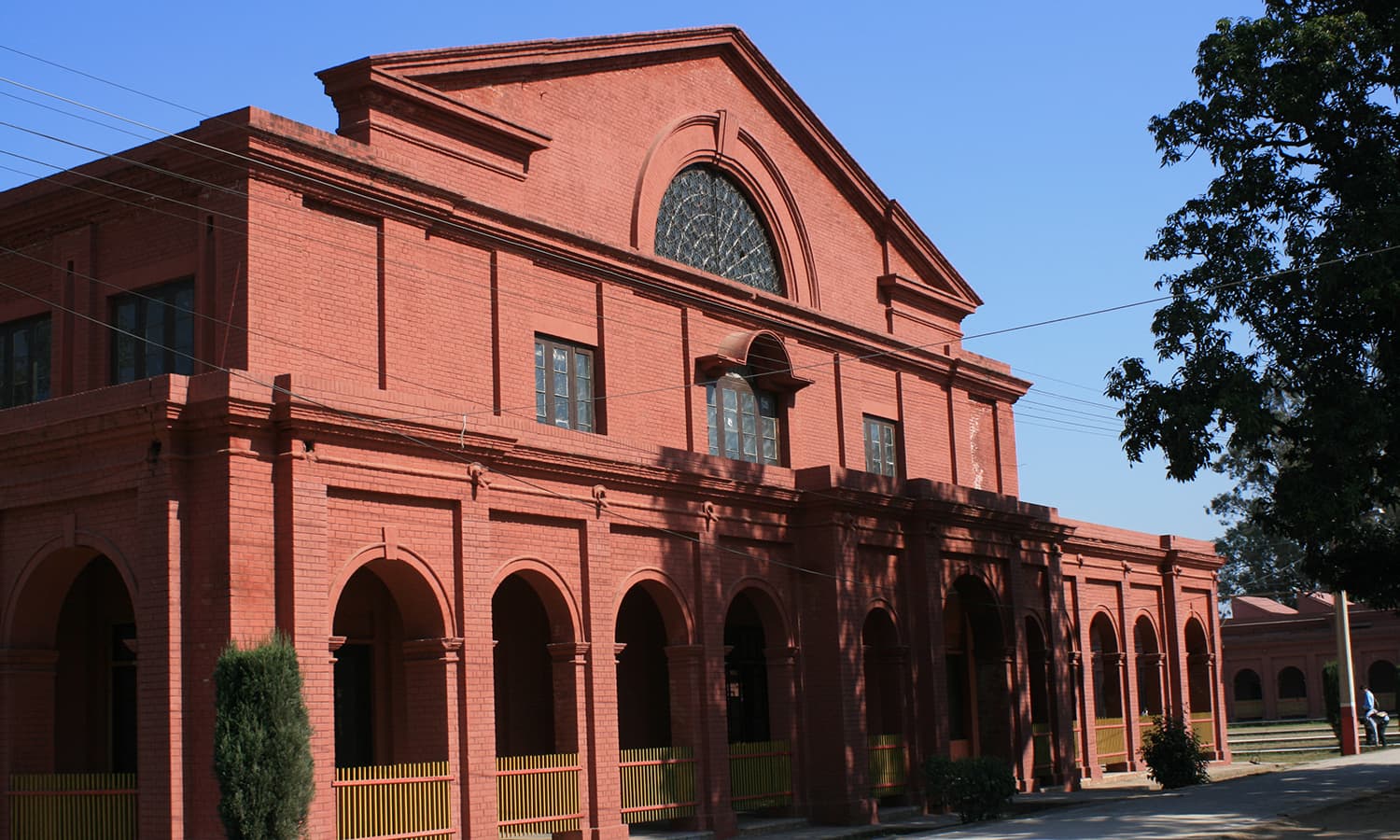Pathar Kothi is one of the series of rest houses built in the late 19th century along a river in Rasul village, Punjab.
Sprawling gardens surround a small white-bricked house with a terrace facing a river, far from the bustling city life. Two tilted pine trees overshadow the front entrance; a grilled gate leads to the basement and a spiral staircase to the roof facing the water. The emblem on the wall of the roof reads “Rasul 1920”.
This is Pathar Kothi (Stone Mansion) – a small, but airy rest house on the bank of the River Jhelum, in the Rasul village of Mandi Bahauddin district. It is part of the series of rest houses built by the Irrigation Department in the late 19th and early 20th century along the river, and one of the many things that Rasul village has to offer.
The river water has receded and the only things you can now see are shrubs and plants when you look down from the terrace. By the side of the rest house at a distance, you see a broken lift that used to run across the other side of the river and was used for transport.
A staircase in the terrace also opens into the basement, which has a dingy look and a very low ceiling.
This rest house is also famous among hunters who come to shoot ducks and birds that come to the river. The terrace giving them the added advantage.
On the way from the Jhelum city to the Pathar Kothi is another similar rest house. The emblem above its door is the same as the one on Pathar Kothi but the year is different – “1899”. It could be part of the same series of rest houses.
Another famous structure that the Rasul village flaunts, is its more than a century old tech college which was built in 1912.
The first few things you notice when you enter the college, now also a university, are old trees with wide trunks and red-brick buildings. There are hardly any buildings inside that have not been painted red.
In 2012, the college celebrated its 100th anniversary and invited possibly all of its alumni, many of them belonging to present-day India.
Some of the buildings inside the college have lion head sculptures, which were popular in the 19th and early 20th century British architecture representing loyalty.
